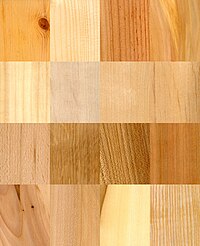
Photo from wikipedia
This study aims to evaluate the technical feasibility of applying a low-cost alternative natural bioadsorbent obtained from the cone of the Moroccan cypress Cupressus sempervirens to remove dyes from contaminated… Click to show full abstract
This study aims to evaluate the technical feasibility of applying a low-cost alternative natural bioadsorbent obtained from the cone of the Moroccan cypress Cupressus sempervirens to remove dyes from contaminated waters. Methylene Blue (MB) and Congo Red (CR) dyes are used to represent basic and acid compounds present in wastewater of textile industries. The cone of this medium-sized coniferous evergreen tree was obtained from the Fez area and was characterised by different physical–chemical methods, including nitrogen adsorption–desorption isotherms, Fourier transform infrared spectroscopy, scanning electron microscopy, Boehm titration method and the pH of the point of zero charge (pHpzc). Additionally, the influence of operating conditions such as contact time, initial dye concentration, binary mixture of dye solutions, bioadsorbent dosages and solution pH were evaluated. Experimental results reveal that the adsorption processes take place very rapidly, reaching equilibrium at 30 and 45 min for MB and CR, respectively. Maximum adsorption capacities result to be pH dependents. Hence, MB adsorption is favoured under basic pH conditions, while CR is favoured at acidic pH. A pseudo-second-order kinetic model provides the best fit of the experimental data of MB and CR adsorption onto the biomaterial. Adsorption isotherm data are well represented by Langmuir, Freundlich and Dubinin–Radushkevich models. Langmuir model gives the best fit with a maximum monolayer sorption capacity of 144 and 25.02 mg g–1 for MB and CR, respectively. Experimental results indicate that the cone of Cupressus sempervirens could be used as a potential, low-cost bioadsorbent for the elimination of dyes from contaminated waters.
Journal Title: DESALINATION AND WATER TREATMENT
Year Published: 2019
Link to full text (if available)
Share on Social Media: Sign Up to like & get
recommendations!